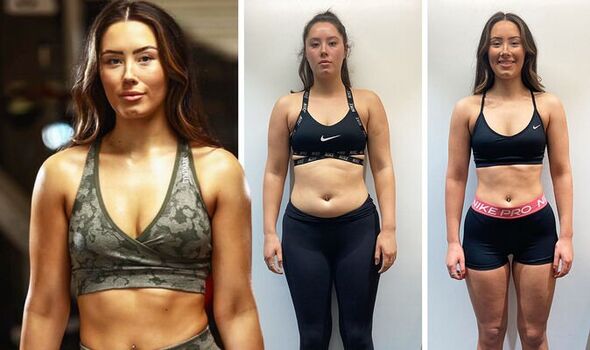
Arthur Agatston developed the South Beach Diet as a weight loss strategy in 2003. This diet encourages low-glycemic index foods and categorizes carbs and fats as "good", "bad", and "good". It is a good plan that works for many people but not for all. There are many variations of the diet and some have more benefits than others. For more information, read the book or website linked below.
South Beach diet encourages healthy eating, fresh food, low-fat and moderate protein, as well as dietary fiber. In the first phase, you will lose around a pound per semaine. This is similar the traditional weight loss advice, so you will likely maintain your new weight. Although it may not be the most well-known diet, it can help you lose weight quickly and keep you slim for the rest of your life.

The South Beach diet may not be for everyone. It's important that people don't consume enough omega-6 fat. Research has shown that high levels of omega-6 and omega-3 fat are linked to inflammation and heart disease. The South Beach diet is low in saturated fat, but you can find foods rich in this healthy oil with this eating plan. If you follow this diet properly, you should be able to lose weight and keep it off for a long time.
The South Beach diet is designed around the principle that you should eat low-carb/high-fat/low-carb. This is an effective and safe combination for some people. The South Beach diet does not contain artificial flavors or colors, so there's no reason to feel deprived of your favorite foods. Make sure you include lots of vegetables in your diet. It will provide you with the energy you require while keeping you healthy.
There are three phases of the South Beach Diet. The first phase lasts for about two weeks and aims to eliminate cravings and stabilize blood-sugar levels. The second phase requires that you consume three balanced meals per day along with some snacks. It is important that healthy fats such avocado, olives, and chickpeas be included. You should avoid refined carbs.

There are three phases to the South Beach Diet. The first phase involves a two-week fast to eliminate all carbs. This phase will help not only you lose weight but also help you keep the diet going. It is not meant to be a strict diet. This phase is crucial for weight loss, but you need to be mindful of your carb intake. If you are diabetic, you can reduce the amount of carbs you eat to avoid insulin resistance.
FAQ
How Much Exercise is Required to Lose Weight?
There are many factors that influence the amount of exercise required to lose weight. These include your gender, age, body type and how heavy you are. Most people need to exercise at least 30 minutes five days a weeks.
The American College of Sports Medicine recommends 150-minutes of moderately intense aerobic activity every week. It should be spread over three separate days.
If you are trying to lose 10 pounds, 300 minutes of moderate intensity exercise per week is a good goal. This includes activities such as brisk walking, swimming laps, biking, dancing, playing tennis, golfing, hiking, jogging, running, and other similar activities.
If you're just starting out, consider doing 20 minutes of vigorous activity thrice weekly. You could do sprints, lifting weights or jumping rope.
Aerobic exercise can also help you burn calories and increase muscle mass. Muscle burns a lot more calories than fat. So building muscle while losing weight may help you achieve your goal faster.
How Much Weight Can You Lose in a Week?
The amount of weight you can lose depends on your current body fat percentage. First, calculate how much weight your goal weight is and then determine what your BMI (Body Mass Index). Your BMI indicates how much weight we should lose to achieve our goal. If your BMI is 25 or greater, you're overweight. If your BMI reads 30 or more, you are likely obese.
Your BMI is calculated at 28.7 if your weight is 200. To drop to a healthy range of weight, you will need to lose approximately 70 pounds. To see if you're overweight, visit www.healthyminds.com/bmi/.
Once you know your BMI, this formula will allow you to determine how many pounds per week you'll be able to lose.
(Your Goal Weight - Current Weight)/BMI * 7 Number Of Pounds Lost Per Week
For 50 pounds to be lost in one month, it would take 2 weeks of exercise. 56 days is equivalent to 7 pounds per day. That's 8.3 pounds per week.
You could also try this calculator from www.weightlosscalculator.net. It gives you a rough estimate of how many calories you should eat daily to lose 1 pound per week.
How long does weight loss take?
It takes time and effort to lose weight. It usually takes six to eight months to lose 10%.
It's important to remember that you shouldn't expect to lose weight overnight. Your body needs time to adjust to new dietary changes.
This means that you need to slowly change your diet over a period of time, such as a few days or weeks.
Fad diets should be stopped as they are often not effective. Instead, change your daily routine.
You should stop eating unhealthy snacks late at nights, for example.
Instead, you should eat healthier meals earlier in the evening. This will prevent you from snacking late at night.
A good habit to follow is to drink plenty of water throughout your day. Water helps to keep your body hydrated and prevents dehydration. Dehydration causes you to feel fatigued and slow.
You will stay more energized and focus if you drink lots of water throughout your day.
Relaxing activities can help reduce stress. You can spend time with family members, for example.
Or you could read books, watch movies, listen to music, etc.
These activities can help you to unwind after stressful situations. In addition, they will improve your mood and boost your self-esteem.
So, when you're trying to lose weight, you should always think about your health first.
Your physical fitness level is an indicator of your overall health. If you are looking to improve your physical fitness, it is important that you eat well and do regular exercise.
What length of Intermittent Fasting should I be doing to lose weight?
It's not as easy to answer as you might think. For optimal fat loss, you need to take into account many factors. These are:
-
Your age. Your age. Intermittent fasting is more difficult for younger people under 40. You have less time to recover each day from fasting. However, intermittent fasting may be too difficult for older people (over 60) who might not have the energy to continue a long period of daily fasting.
-
Your current body composition. Your current body composition. If you have a lot more muscle mass than you need, then you will likely be more successful with longer fasting periods. You may find shorter fasting more beneficial if your muscle mass is low.
-
How physically active you are. Regular exercise may mean that your fasting window needs to be extended to allow you to get sufficient rest between sessions.
-
Your health history. Additional fasting monitoring may be required for certain medical conditions such as diabetes or heart disease.
-
How well do you tolerate stress? Stressful situations often cause us to eat more. This problem can be avoided by increasing the length of your fasting periods.
-
Your diet. Certain diets, like ketogenic diets, may require even longer fasting periods.
-
Your sleep quality. Lack of sleep has also been linked to increased appetite and decreased metabolism. Therefore, it may take some experimentation before determining what works best for you.
-
The amount you eat of protein. Protein helps stabilize blood sugar levels, which means that eating more protein could potentially lead to lower insulin levels. This would allow for you to fast more often.
-
Whether you're trying to gain or lose weight, people who are trying to gain weight usually require longer fasting periods than those who are trying to lose weight.
-
How many calories did you consume during your fasting period? You may lose more weight if you eat fewer calories each day than if you eat more.
-
Your overall fitness level. The metabolic rate of fast people who are fit is higher, which means they burn more calories each day.
-
Your gender. Men tend to have greater appetites that women, so they may need a longer fast. Women are more likely to have smaller appetites and may need to fast only 20-30 minutes every day.
-
Your lifestyle. Are you someone who gets plenty of physical activity? Do you exercise multiple times a week or do you just go to the gym? Is your job a long, sedentary one? These factors can impact how fast you should be moving.
-
What amount do you spend on food each month? Eating healthy foods doesn't necessarily mean spending much money on groceries. It's possible to save money by purchasing whole grains rather than white bread, fruit instead of candy bars, lean meats instead fatty cuts, and fruits instead of candy.
-
You need to be able to control your hunger. Fasting may not be necessary if you don't want skip meals.
Are there side effects to intermittent fasting
Intermittent fasting has no known side effects. Some minor issues might occur if you do not plan your meals properly.
If you skip breakfast, for example, you may feel constantly irritable. Also, you might experience dizziness, headaches, fatigue, muscle cramps, and dizziness.
These symptoms usually disappear within a few days.
Statistics
- According to Harvard Health, it's estimated that a 155-pound (70-kg) person burns roughly 112 calories per 30 minutes of weight training (5). (healthline.com)
- According to a study sponsored by the American Council on Exercise, a person weighing around 140 pounds (64 kg) would burn 108 calories at a 30-minute beginner's Pilates class or 168 calories at an advanced class of the same duration (26). (healthline.com)
- Another study found that 24 weeks of weight training led to a 9% increase in metabolic rate among men, which equated to burning approximately 140 more calories per day. (healthline.com)
- A 12-week study in 20 women with obesity found that walking for 50–70 minutes 3 times per week reduced body fat and waist circumference by an average of 1.5% and 1.1 inches (2.8 cm), respectively (healthline.com)
External Links
How To
How to Intermittent Fasting
Intermittent fasting is a dieting method where you normally eat one day per week, usually Monday through Friday. The idea behind this is to reduce your overall calorie intake while still getting adequate nutrition. This helps you lose fat more quickly than if it were your normal meals for the entire week.
The most popular form of IF is to limit calories to certain days. This means you could skip breakfast every morning and still eat what you want the rest of the week. It is possible to choose to have three smaller meals each day, rather than two large.
There are many forms of intermittent fasting. There are pros and cons to each type of intermittent fasting. Because you don't need to make major lifestyle changes, alternate day fasting can be the easiest way to get started. However, not everyone can stick to a rigid schedule. They might prefer to experiment with other methods.
Alternate-day fasting is a good option if you are looking to begin an intermittent fasting program. This will allow you to gradually transition into more extreme fasting routines without completely changing your lifestyle.